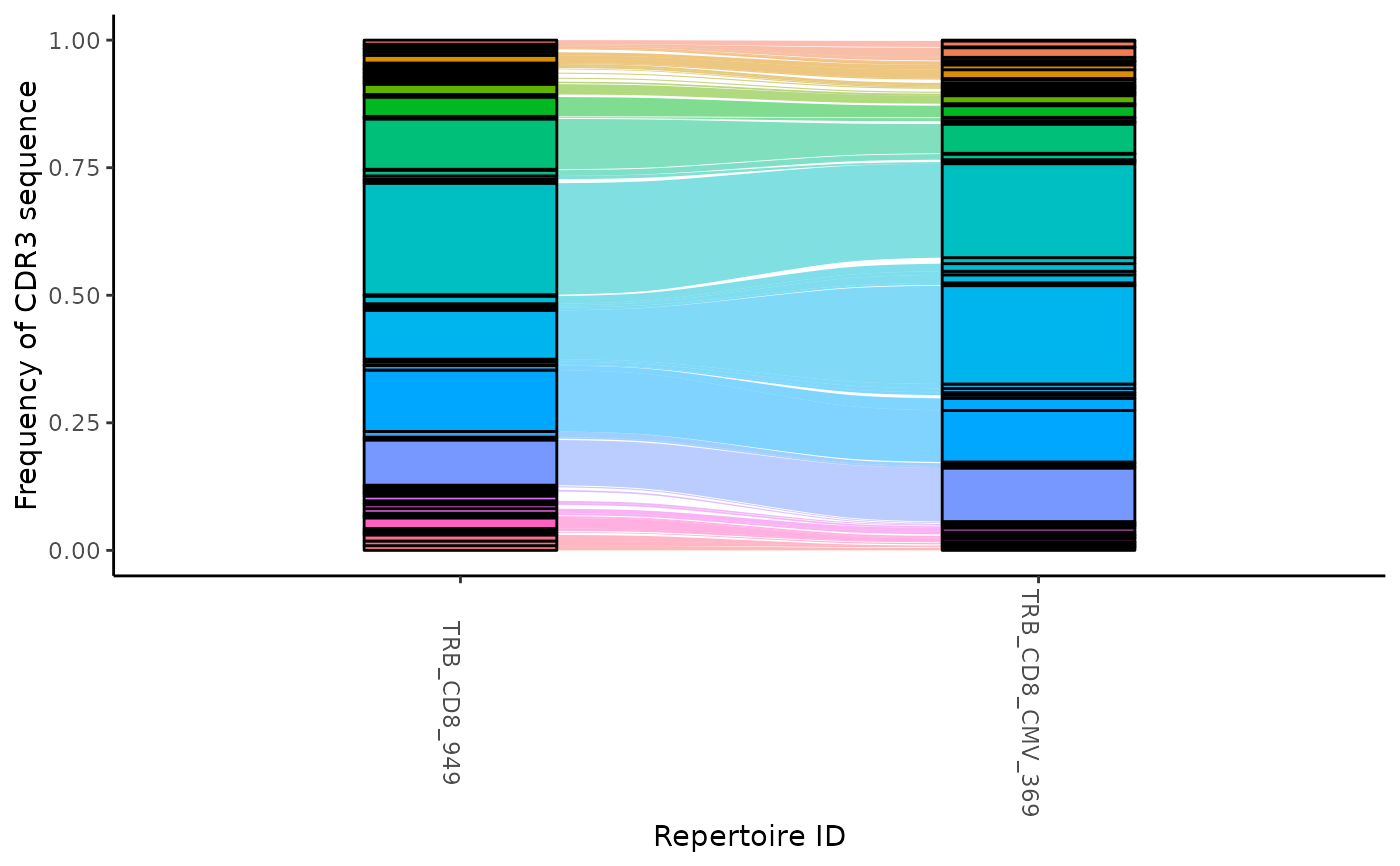Creates alluvial tracking amino acid frequencies across multiple samples
Usage
plotTrack(
clone_table,
alist = NULL,
apal = NULL,
breaks = 2,
alphas = 0,
breaks_pal = c("#7fc97f", "#beaed4")
)Arguments
- clone_table
A tibble of productive amino acid sequences generated by LymphoSeq2 function
cloneTrack()- alist
An optional list of amino acid, if a list is provided only those sequences will be highlighted
- apal
An optional list of palette colors used for the amino acids to be highlighted
- breaks
Add an additional band behind the alluvial plot to highlight group, specifies after which bar the break should appear
- alphas
Set alpha for the band
- breaks_pal
Specify palette for the bands
Details
The plot is made using the package ggplot2 and can be reformatted using ggplot2 functions. See examples below.
Examples
file_path <- system.file("extdata", "TCRB_sequencing",
package = "LymphoSeq2")
study_table <- LymphoSeq2::readImmunoSeq(path = file_path, threads = 1)
#> Dataset Analysis:
#> Files: 10, Total: 0.00 GB, Largest: 0.0 MB
#> Available memory: 11.9 GB
study_table <- LymphoSeq2::topSeqs(study_table, top = 100)
amino_table <- LymphoSeq2::productiveSeq(study_table,
aggregate = "junction_aa"
)
clone_table <- LymphoSeq2::cloneTrack(
study_table = amino_table,
sample_list = c(
"TRB_CD8_949",
"TRB_CD8_CMV_369"
)
)
LymphoSeq2::plotTrack(clone_table)

